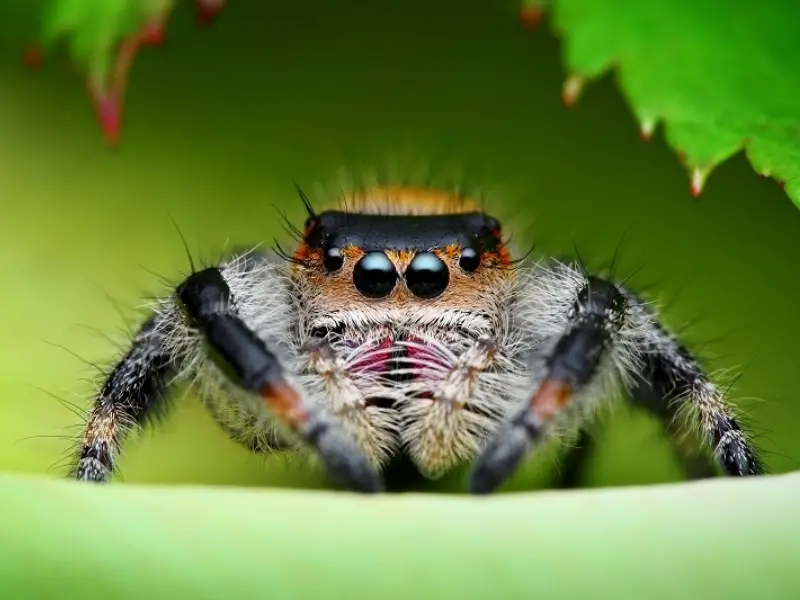
The Phidippus Regius belongs to the Salticidae family. It is a species of jumping spider that was first found in the Southeastern USA and West Indies. It prefers its natural habitat which is tropical or subtropical, as it is accustomed to high temperatures and humidity.
Spiders are a very rare species that are often kept as pets. The Phidippus Regius, or the Regal Jumping Spider, is a preferred species and has become a household name.
With more information available about exotic pets on the internet, people are gradually warming up to the idea of keeping these unusual creatures as pets. Since this is not a typical pet, you should get your facts right before venturing on this journey.
The Phidippus Regius is popular and one of the most commonly kept species of jumping spider. It looks adorable, requires minimal care, and has a great temperament that makes it suitable for beginners and experts alike.
Appearance
Spiders often have striking physical characteristics in terms of appearance, which makes them even more popular. The Phidippus Regius comes in remarkable colors, usually black or brown, with several other combinations. The most outstanding feature is the remarkably huge beady eyes on a comparatively small body.
This spider is a diurnal, visual hunter, which means that it is active during the day and hunts by night. Just like other jumping spider species, the Regal Jumping Spider exhibits sexual dimorphism, meaning that males and females have different appearances.
The females are larger and generally grow up to 22mm in body length. They have brighter or lighter colors on their bodies that can range in color from gray to orange. The males mostly have black with white markings on their abdomen below a white band. However, the environment they grow in affects their appearances.
There are other noticeable physiological differences when they are in captivity or are a product of selective breeding besides colors. The males are often smaller measuring up to 15mm body length, are slimmer, and have longer heavier-looking forelegs. On the other hand, the females get quite chunky, especially when gravid or just well fed.
The most attractive characteristic of the Regal Jumping Spider is the blue-green or pink-colored iridescent/metallic chelicerae or “jaws,” which are quite large. Another fact is that the papli blocks the chelicerae. The papli is oversized, but it does not appear very big since it is covered with white hair. They have three rows of eyes, where the first row is large and visible.
Care Guide
Housing
The Phidippus Regius is easy to house as it is small and has basic care requirements. If you build or procure a small enclosure, wooden or otherwise, you can keep your pet comfortable. Ensure that the space has good airflow and throw in a few accessories to brighten up the area.
However, these spiders are small and adaptable. You can experiment with different enclosures. Based on how much space you have at home, you should check length, width, and depth.
Make it secure and breathable, so it gets a lot of space for exploration. You should keep these requirements in mind either when you’re buying the enclosure or building one so that it is easier to clean and maintain.
Small enclosures are easy to decorate. You should line the ground of the enclosure with about 2 inches of moisture-retaining substrate like coconut fiber. This makes the flooring soft, keeps the enclosure clean, and maintains a healthy humidity level.
Place some small branches or twigs or even a tiny plant on top of the substrate. Doing this gives your spider plenty of areas to climb and build webs. A tiny water dish could also help prevent dehydration and keep the humidity consistent.
Enclosure Temperature/Humidity
Unlike other species, the Phidippus Regius‘s optimal temperature is usually around room temperature. If you live in colder areas and get extremely cold, then you may need to supplement some heating, such as a space heater. A lot of times, this is not necessary.
The Regal Jumping Spider’s natural habitat usually has summer temperatures soaring above 30ºC, with the relative humidity hovering around 75-80%. In the wild, they adapt themselves to the changes in temperature and humidity since they are out in the open with free fresh air.
In an enclosed space in captivity, temperatures remain between 24-28ºC, and relative humidity is around 50-60%. Maintain the humidity levels by spraying on one side of the enclosure with water once every 2-3 days.
Make sure you don’t spray the spider. A fine water mist every morning and a light mist in the afternoon during summer work well for the spider. If there is high humidity in an enclosed space with limited air movement, mold will begin to form and kill the spider.
So, consider the light levels, plus these spiders absolutely love light. When outdoors, spiders face storms and rain, which drench everything. The following heat dries it all off again. in captivity seems to prefer things on the drier side. Keep the enclosure near a bit of light during the daytime.
Place the enclosure near a window but make sure that their enclosure isn’t heating up. An LED lamp also does the trick. Avoid using heating mats. If you do need to heat several enclosures at once, then place a heat mat placed vertically behind the enclosures.
Feeding
You need to take quite a few things into account when feeding these spiders. Since they’re so small, you can’t feed them standard insects, at least not initially. You should feed the young spiderlings, flightless fruit flies, or tiny pinhead crickets as much as they are willing to eat. Do This 1-3 times per week.
As the spider grows, small insects will not be able to satisfy their appetite. Before this becomes a major issue, transition them to larger food, like small mealworms or crickets. They should be shorter than your jumping spider’s body. Clean out any uneaten food from the enclosure to prevent health risks and unsanitary conditions.
Lifespan & Health Concerns
The Phidippus Regius does not suffer from major health issues. If you regularly clean a well-built and secure enclosure, maintaining the light and humidity of your spider can be safe and comfortable.
If your spider has a good diet, there aren’t many things that can go wrong. However, a common problem that owners face with their jumping spiders is dehydration. If there is inadequate enclosure spraying and a lack of a water dish, then this can happen.
Spray the enclosure with water at least twice a week. To get an accurate reading of the temperature and humidity, use a digital thermometer or hygrometer to measure the conditions for dryness.
Sometimes the spider can damage their legs by falling from a height, so keep the floor moist and soft. The lifespan of the regal jumping spider is quite short. These creatures only shed about 5 to 6 times from young to adulthood. And their total life span is about 1 to 3 years.
Behavior
The Phidippus Regius has a balanced and friendly temperament, which is the main reason why it is so popular. The Regal Jumping Spider is a curious and gentle creature that obviously loves to jump. Unlike most tarantulas, this spider forms a bond with its owner.
This spider can recognize people and quietly observes changes around their area while jumping and exploring. You can handle your spider for extended periods of time without then becoming flighty.
Inside the enclosure, this spider spends time either sleeping in its web sack or simply jumping around. Since they are small, it can be risky to take them out. Handle yours with caution at first, and move them around only once enough time has passed.
How to Keep The Regal Jumping Spider Safe?
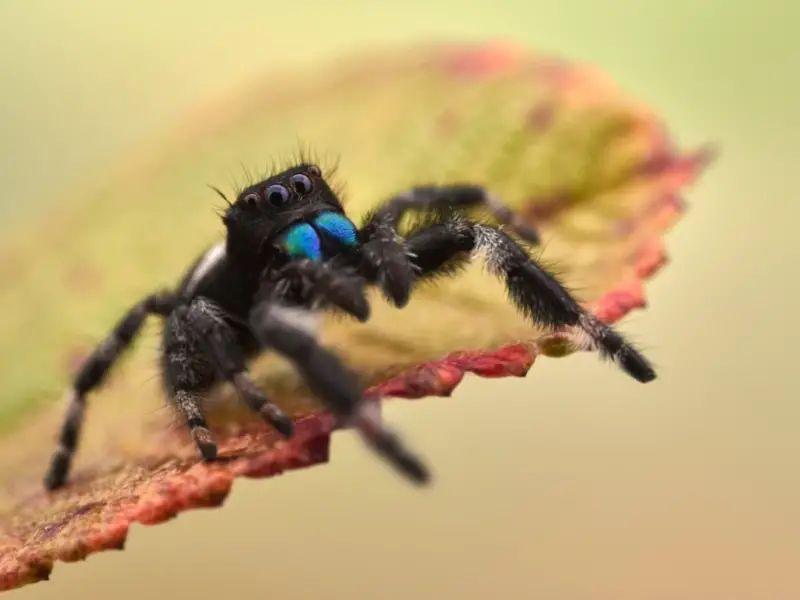
Good Housing
These tiny pets are easy to maintain. If you don’t buy one, you could always rescue or catch them in the wild.
If you already live in a tropical country, then the spider has already adapted to the climate. It will then require less acclimatization.
If you live in a cold area, you need to provide heat or have the right humidity level. However, they are hardy and adapt to a changing environment. Just ensure that the enclosure has sufficient light and is sprayed regularly. A cozy and clean enclosure will aid in its growth.
Space
You must provide adequate space for these spiders. Once you decide where to keep your pet enclosure, you have done the job already.
Depending on how much space you have, you can keep them in a small terrarium, jar, or tank. You could even place it on a window or a tabletop. Open empty and airy spaces work best.
You should keep the enclosure higher than normal since these spiders are adventurous and like to move around. This also keeps them out of reach of other pets, which might disrupt the enclosure.
Does the Regal Jumping Spider Pose a Threat to Humans?
While the Regal Jumping Spider makes for an easy pet, it can occasionally cause some significant concern among first-time spider owners; spider bites, and venom, to name a couple.
Like most animals, they defend themselves when they believe that their lives are in danger. Fortunately, non-allergic people are safe, and their bites can heal quickly depending on the affected individual. Spiders usually take flight if they are afraid of you on the first encounter.
Handling them can trigger their defense mechanism and result in a nasty bite. The spider bites are often really painful, leading to swelling and irritation. If you are allergic, then the reactions are much more severe.
You need to practice easing them into your hold when handling them. Or just wear gloves and other protective gear when holding them for the first time.
Average Cost and Where to Buy Regal Jumping Spider
If you want to acquire one of these creatures, you can either buy them from sellers who offer attractive prices or catch them on your own. Since it is small, it costs less.
This is quite common as it has a short lifespan. You can purchase a tiny spiderling for under $10. Adult males and females sell for between $20 and $30.
This often includes shipping and a safe arrival guarantee, so it is worth the investment. If your aim is to get an adorable, energetic, curious spider, then the Phidippus Regius or Regal Jumping Spider is the one pet for you.
Cost of maintenance
Compared to other exotic pets, the cost of maintenance is one of the lowest. For housing, you can DIY everything. Additionally, the food source can be cultivated or caught.
Spider food
- Mealworms: $12 to $14
- Wingless fruit flies culture: $16 to $18
- Crickets: $29.99
Spider housing
- Kritter keeper tank: Medium to large tanks cost $25
- Aquarium tank: 10-gallon tanks cost between $20 to $30
The total cost for keeping a jumping spider can be less than $50. In most cases, spiders are quite resilient, so you don’t really have to spend too much.
Facts and Useful Information
|
Common Name |
Regal Jumping Spider |
|
Habitat |
Southeastern United States, Bahamas |
|
Growth Rate |
Fast, Matures in a few months |
|
Adult Size |
Females – ⅗” , Males ½” |
|
Life Span |
Short, Around 1- 2 years |
|
Enclosure |
Small size with moist substrate, placed under enough light |
|
Temperature |
75 F, with consistent misting |
|
Diet |
Fruit Flies, mealworms |
|
Temperament |
Curious and energetic |
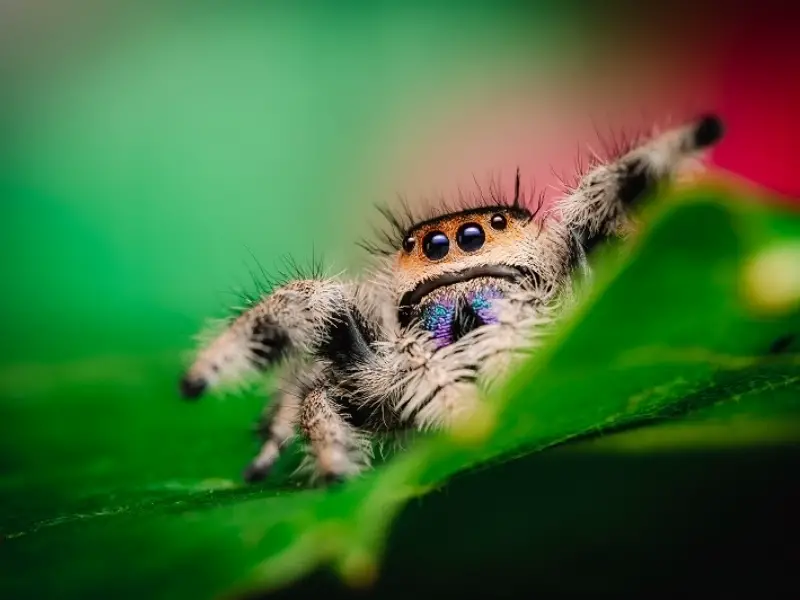
Summary
Overall, the Phidippus Regius, or the Regal Jumping Spider, is a good pet that is beginner-friendly, curious, and energetic. They often exhibit interesting behavior and can be easily handled once you spend enough time with them.
Given their diminutive size, they are feasible to keep as they require little space.
These relatively low-maintenance pets have a short lifespan and hence are not a long-term commitment. They just need a safe and comfortable shelter, food, and water.
Since their initial and upkeep costs are low, you can feed them a few times a week without straining your budget. This low-budget pet is a great source of entertainment and will add some interest to your home space.
Sources:
- https://en.wikipedia.org/wiki/Phidippus_regius
- https://www.fdacs.gov/content/download/10618/file/ent223.pdf
- https://entnemdept.ufl.edu/creatures/misc/regal_jumping_spider.htm

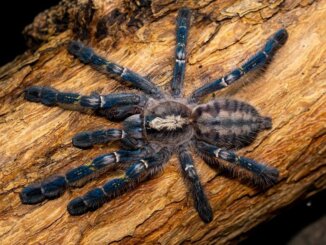
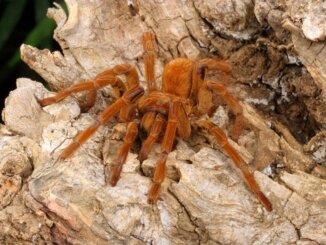
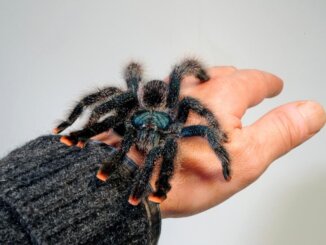

So I’m pretty sure I have a male regal jumping spider, thing is I found eggs in the nest. Should I be expecting babies or..? Someone help me before they hatch lol.
Hi Alyssa. So, females lay eggs (you might get 200 of them) in silk cocoons, usually under a tree bark or other hides. Males are black and white and very rarely get to 2cm in length. Having a male with eggs seems unlikely, but she could be an oddly colored female. Search for pictures of the Regal Jumping Spiders eggs to make sure that’s what you’re seeing. If you confirm your suspects, you should expect them to hatch!
Hi, my jumper just had babies. I just separated them and they are almost a week old. When can I sell them- at how many weeks/months?
I believe you can sell them as babies during the first two to three weeks, and as juveniles in the following month or so.